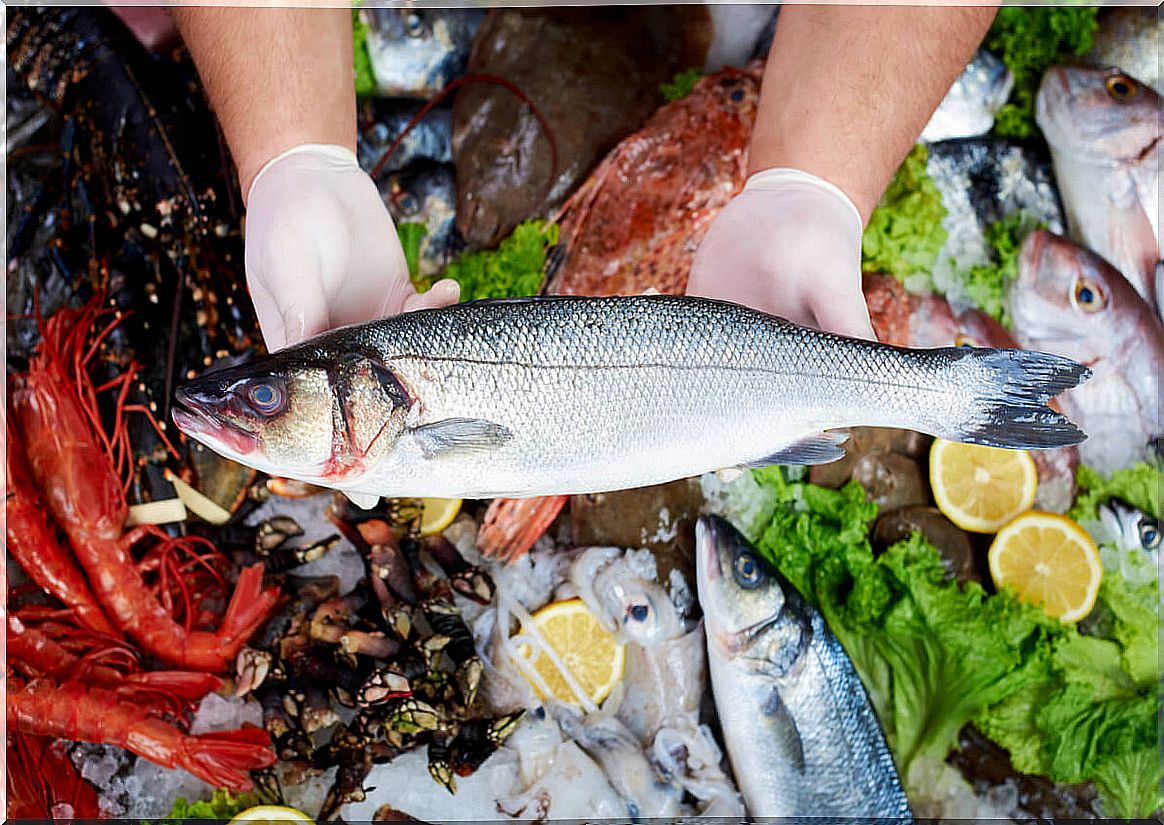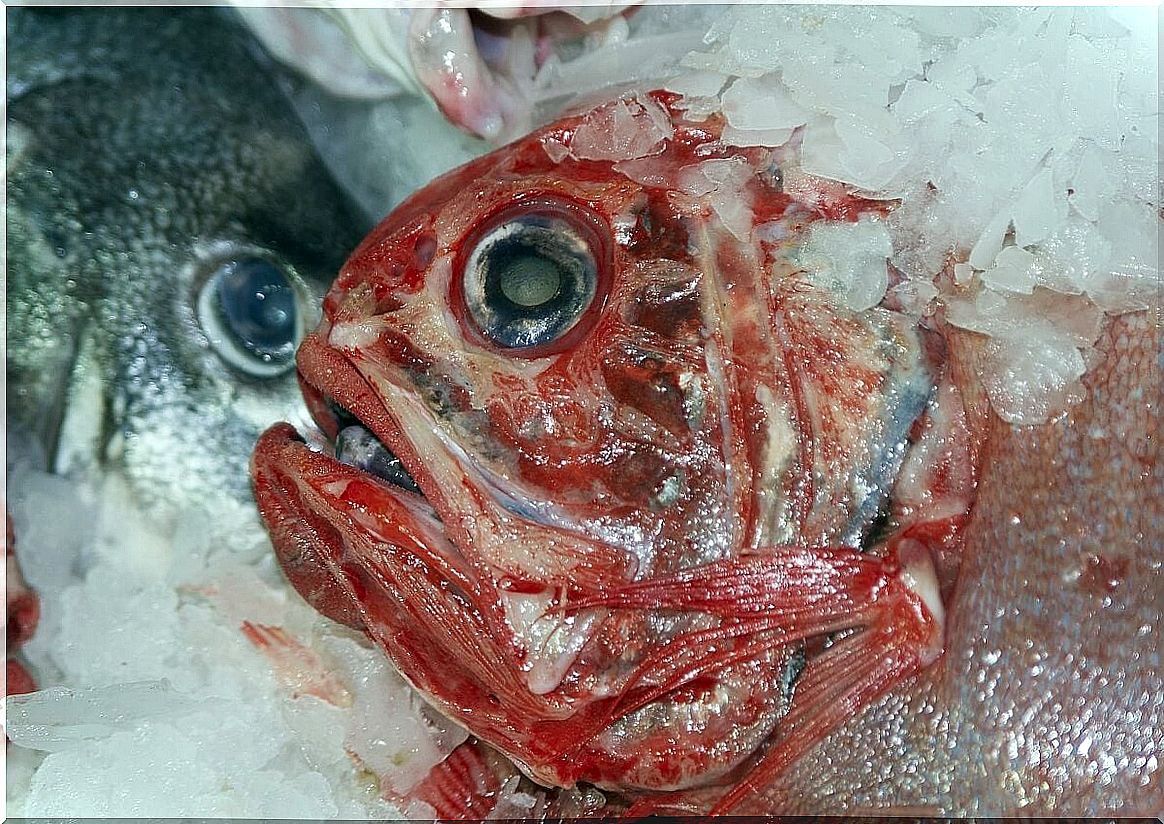Reasons Not To Eat These 5 Kinds Of Fish
Fish, in general, are known to be an important source of essential nutrients. However, there are some species that can be transmitters of heavy metals, or, of alimentary diseases. Do you know the fish that you should not eat?
In relation to this, the World Health Organization (WHO) points out that the main source of human exposure to toxic compounds is through the consumption of fish and shellfish. In particular, these substances affect health and, above all, represent a significant risk for pregnant and lactating women.
Fish that you should not eat: what is the reason?
For years, it has been known that a wide variety of marine species, particularly those that are found in the last levels of the food chain, can accumulate metals such as cadmium, lead and mercury that come from the mining, livestock, agricultural, among others.
The concentrations become so high that they are lethal. In fact, the massive poisoning that occurred in Minamata Bay, Japan, in the early 1950s, is the most recognized case of poisoning resulting from the consumption of fish with high levels of mercury.

Effects of mercury on human health
According to a study published in the Chilean medical journal, the toxicity of mercury in fish is associated with the chemical form, the type, the dose of exposure and the age at which it occurs. When this metal is released into the environment, it undergoes a series of transformations and participates in cycles between the atmosphere, the ocean and the land.
The 5%, which ends up in water (counting lakes, lagoons, wetlands, estuaries and oceans), is elemental mercury and accumulates in sediments. The bacteria that live there convert it to methylmercury, which is then extracted by worms, earthworms and other animals.
This is the organic substance that the fish end up ingesting, and it is the one that manifests the greatest toxicity for living organisms, since it gives rise to problems in:
- The nervous system.
- The immune system.
- The kidneys.
- Digestive system.
- Lungs.
- The skin.
- The eyes.
Fish that you should not consume regularly
Now, based on the aforementioned, there are species that can live for more than 100 years, therefore, the ingestion of these substances throughout their life increases their potential for toxicity.
Also, there are large fish that end up ingesting large amounts due to their higher intake. Next we will tell you which are the fish that you should avoid consuming.
King mackerel (Scomberomorus cavalla)
King mackerel is a marine fish that has an elongated, spindle-shaped body. It has a pointed snout and a wide mouth. In addition, it has large eyes that are surrounded by a closed bony ring. Its body is covered with small scales, with a bright greenish-blue back, with pale green flanks and a silver belly.
It is usually 65 centimeters tall, however males can reach a length of up to 2 meters. This species lives in the Atlantic Ocean from Canada and Massachusetts (United States) to São Paulo (Brazil).
Blue marlin (Makaira nigricans)
It is a kind of Marlin that can exceed 4 meters in length, although it usually measures between 1.80 and 3 meters. It is also known by other names, such as “blue marlin” or “Atlantic blue marlin” because of the color on the back. However, it is silvery white in the belly area.
Its body is elongated and has two dorsal fins. Regarding the upper jaw, it is shaped like a sword. Generally, this fish lives in subtropical and tropical waters of the Atlantic, including the coasts of the Canary Islands.
It is also found in the Pacific and Indian Oceans. Females weigh up to 450 kilograms, while males do not exceed 160 kilograms.
Orange roughy (Hoplostethus atlanticus)
This sea fish inhabits the east and northwest of the Atlantic Ocean, the southern Pacific Ocean and the Indian Ocean. Its body is oval and remarkably compressed. In turn, it has a large head, small eyes, and tiny teeth. It has a dark orange color on the body and red on the head.
It inhabits depths of 180 to 1500 meters, and is captured as an incidental species with mixed bottom trawls. Orange roughy is the oldest known fish, estimated to be 180 years old.

Common cod (Gadu morhua)
Common cod, also known as “Atlantic cod” or “Norwegian cod” is one of 60 species of migratory fish. It inhabits the Northeast Atlantic Ocean, from the Barents Sea to the Bay of Biscay, including the waters of Iceland, Greenland and the Baltic Sea.
It is generally small in size, although some specimens reach 2 meters in length and weigh up to 100 kilograms. They feed on other fish such as herring or sardines. It is 600 meters deep.
Big-eyed tuna (Thunnus obesus)
Big-eyed tuna is one of the species in which there can be considerable amounts of mercury. It should be noted that the same does not happen with Mediterranean tuna. This variety is also known as “bigeye tuna”, “ojigrande”, “albacore”, “tuna”, among others.
It lives in tropical and subtropical areas of the Atlantic, Indian and Pacific, but is absent in the Mediterranean Sea. It reaches a maximum height of 2.50 meters, but usually reaches 1.80 meters at an approximate age of 15 years.
You should not eat these fish
These are some species that can accumulate excess heavy metals, especially methylmercury. It should be noted that there are other fish that contain it, but this contribution is often not significant.
Likewise, those who are most vulnerable to these toxic substances are women of reproductive age, pregnant women, wet nurses and children under 2 years of age, given the negative effects that these compounds have on health. Of course, that does not mean that it does not affect other population groups.
Remember that eating moderate amounts of some of the fish described will not harm your health. So, you can do it occasionally without falling into excesses.









